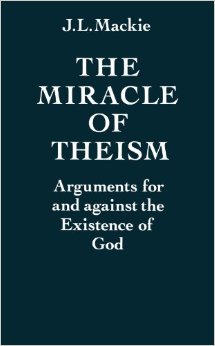
In part 1, I returned to David Hume’s Dialogues Concerning Natural Religion (1779) to discuss a passage in which the character Cleanthes says, “All these various machines, and even their most minute parts, are adjusted to each other with an accuracy which ravishes into admiration all men who have ever contemplated them,” in part because I wanted to identify what may be a previously unnoticed influence on the passage, from Ralph Cudworth’s A Treatise Concerning Eternal and Immutable Morality (1731).
There Cudworth indeed writes, “…being ravished with the contemplation of this admirable mechanism and artifical contrivance of the material universe…” (emphasis added). But it’s not just the compresence of the two words that suggests to me that Hume might have been influenced by Cudworth. For the next sentences read:
Nay, considering further how all things in this great mundane machine or animal (as the ancients would have it) are contributed not only for the beauty of the whole but also for the good of every part of it that is endued with life and sense, it exerts another idea, viz. of goodness and benignity from within itself, besides that of art and wisdom, as the queen regent and empress of art whereby art is employed, regulated and determined; now both these things, whereof the first is art, wisdom and knowledge; the second goodness, benignity and morality, being looked upon as modes of some intellectual being or mind in which they exist, it from hence presently makes up an idea of God, as the author or architect of this great and boundless machine; a mind infinitely good and wise; and so as it were resounds and re-echoes back the great creator’s name, which from those visible characters impressed upon the material universe had pierced loudly into its ears, but in such an indiscernible manner, that sense listening never so attentively could not perceive the least murmur or whisper of it. [Yes, that’s a single 190-word sentence.] And this is the most natural scale by which the intellectual mind in the contemplation of corporeal things ascends to God; from the passive prints and signatures of that one art and wisdom that appears in the universe by taking notice from thence of the exemplary or archetypal cause, one infinite and eternal mind setting his seal upon all.
Here in Cudworth’s Treatise, as in part II of Hume’s Dialogues, there’s a connection asserted between the organized complexity of the natural world on the one hand and the existence of God as a divine coordinator on the other hand, all packaged with “ravish” and “admiration.” Quod erat demonstrandum, right?
Maybe that’s too quick. What’s suggested in the Treatise passage isn’t exactly Cleanthes’s idea that the natural world provides evidence for the existence of God. Rather, Cudworth is discussing the etiology of the idea of God, in part because he’s concerned in the Treatise to defend innatism and attack empiricism. The empiricist Hume wouldn’t have been moved by the claim. But he might have been impressed by the rhetoric, enough to use it when composing dialogue for the natural theologian Cleanthes.
I am not asserting that Cudworth was the only, or even a major, model for the character of Cleanthes in the Dialogues, of course. As I mentioned in part 1, various philosophers and theologians—Joseph Butler, Lord Kames (né Henry Home, a cousin of Hume’s), Colin Maclaurin, and George Cheyne—have been suggested with varying degrees of plausibility as models. But I think that it’s plausible that Hume might have been looking at Cudworth’s Treatise before writing at least part II of the Dialogues.
I will leave it to the doughty if small band of experts on Cudworth to analyze the case for a possible influence suggested here further, while I turn, as promised in part 1, to examine what may be a previously unnoticed—and certainly is a fairly amusing—typographical error quoting the same passage from Hume’s Dialogues, to be found in a book published two centuries further on: The Miracle of Theism (above; 1982), by the late Australian philosopher J. L. Mackie (1917–1981).
Mackie was something of a latter-day Hume. Like Hume, he thought deeply about the philosophy of John Locke (Problems from Locke [1976]), ethics (Ethics: Inventing Right and Wrong [1977]), causation (The Cement of the Universe [1980]), moral theory of the late seventeenth and early eighteenth centuries (Hume’s Moral Theory [1980]), and the philosophy of religion. Indeed, the title of The Miracle of Theism alludes to a typically ironic remark at the end of Hume’s essay “On Miracles.”
Hume’s influence on Mackie’s book isn’t restricted to the title. The first chapter is devoted to exposition and discussion of “On Miracles,” and the eighth chapter, devoted to arguments for design, consists of exposition and discussion of Hume’s Dialogues (along with a third part discussing the restatement of the argument for design due to the contemporary philosopher Richard Swinburne). No fewer than fifty-eight pages of the 228-page book refer to Hume, according to the index.
Here, finally, as promised, is the typographical error. In the eighth chapter of The Miracle of Theism, on p. 134, Mackie misquotes Cleanthes as saying, “All these various machines, and even their most minute parts, are adjusted to one another with an accuracy, which ravishes into administration all men, who have ever contemplated them” (emphasis added). Ravishes into administration? I have to wonder whether he was in the middle of committee work when he was writing the chapter…

